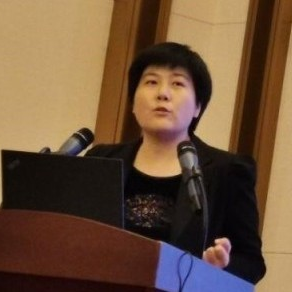Hydrological Modeling in Water Cycle Processes
A special issue of Water (ISSN 2073-4441). This special issue belongs to the section "Hydrology".
Deadline for manuscript submissions: closed (31 December 2020) | Viewed by 70732
Special Issue Editors
Interests: hydrological modeling; flood forecasting, regionalization; uncertainty; impact of climate change and land use change; evapotranspiration
Special Issues, Collections and Topics in MDPI journals
Interests: evapotranspiration; hydrothermal coupling; remote sensing hydrology; hydrological processes; land–atmosphere interactions; land use and land cover change; hydrometeorology
Special Issue Information
Dear Colleagues,
Water cycle processes are complex and have been affected by climate change and human interferences. Modeling the water cycle processes is always a critical strategy for hydrologic research and has long been the goal of all hydrologists. Hydrological models have been developed for many different reasons and therefore have many different forms. However, they are in general designed to meet one of two primary objectives. One objective of hydrological modeling is to gain a better understanding of the hydrological phenomena operating in a catchment and of how changes in the catchment may affect these phenomena. Another objective of hydrological modeling is the generation of synthetic sequences of hydrological data (in both gauged and/or ungauged regions) for facility design or for use in forecasting. In past decades, they were also used to study the potential impacts of changes in land use or climate, reservoir operation, real-time hydrodynamic streamflow routing, real-time flood inundation evaluation, etc. Though great progress has been achieved, challenges still exist in this area—for example, the lack of a profound mechanism understanding of the impacts of a changing environment on water cycle processes, and corresponding effective modeling methodology, as well as uncertainty issues related to data, model parameters and structure—and further studies are required. Discussing these challenges, finding solutions, and presenting the latest achievements are the key purposes of this Special Issue.
This Special Issue welcomes articles dedicated to all aspects of hydrological element measurements and modeling in water cycle processes.
Prof. Dr. Chong-Yu Xu
Prof. Dr. Weiguang Wang
Prof. Dr. Lu Chen
Guest Editors
Manuscript Submission Information
Manuscripts should be submitted online at www.mdpi.com by registering and logging in to this website. Once you are registered, click here to go to the submission form. Manuscripts can be submitted until the deadline. All submissions that pass pre-check are peer-reviewed. Accepted papers will be published continuously in the journal (as soon as accepted) and will be listed together on the special issue website. Research articles, review articles as well as short communications are invited. For planned papers, a title and short abstract (about 100 words) can be sent to the Editorial Office for announcement on this website.
Submitted manuscripts should not have been published previously, nor be under consideration for publication elsewhere (except conference proceedings papers). All manuscripts are thoroughly refereed through a single-blind peer-review process. A guide for authors and other relevant information for submission of manuscripts is available on the Instructions for Authors page. Water is an international peer-reviewed open access semimonthly journal published by MDPI.
Please visit the Instructions for Authors page before submitting a manuscript. The Article Processing Charge (APC) for publication in this open access journal is 2600 CHF (Swiss Francs). Submitted papers should be well formatted and use good English. Authors may use MDPI's English editing service prior to publication or during author revisions.
Keywords
- Hydrological forecast
- Streamflow simulation
- Hydrological model uncertainty
- Runoff responses to climate change and human activities
- Hydrological time series analysis
- Implementation of ensemble hydrologic forecasting
- Reservoir simulation
- Hydrodynamic streamflow routing models
- Evapotranspiration modeling
- Hydrothermal coupling
- Remote sensing and modeling
Benefits of Publishing in a Special Issue
- Ease of navigation: Grouping papers by topic helps scholars navigate broad scope journals more efficiently.
- Greater discoverability: Special Issues support the reach and impact of scientific research. Articles in Special Issues are more discoverable and cited more frequently.
- Expansion of research network: Special Issues facilitate connections among authors, fostering scientific collaborations.
- External promotion: Articles in Special Issues are often promoted through the journal's social media, increasing their visibility.
- e-Book format: Special Issues with more than 10 articles can be published as dedicated e-books, ensuring wide and rapid dissemination.
Further information on MDPI's Special Issue polices can be found here.







